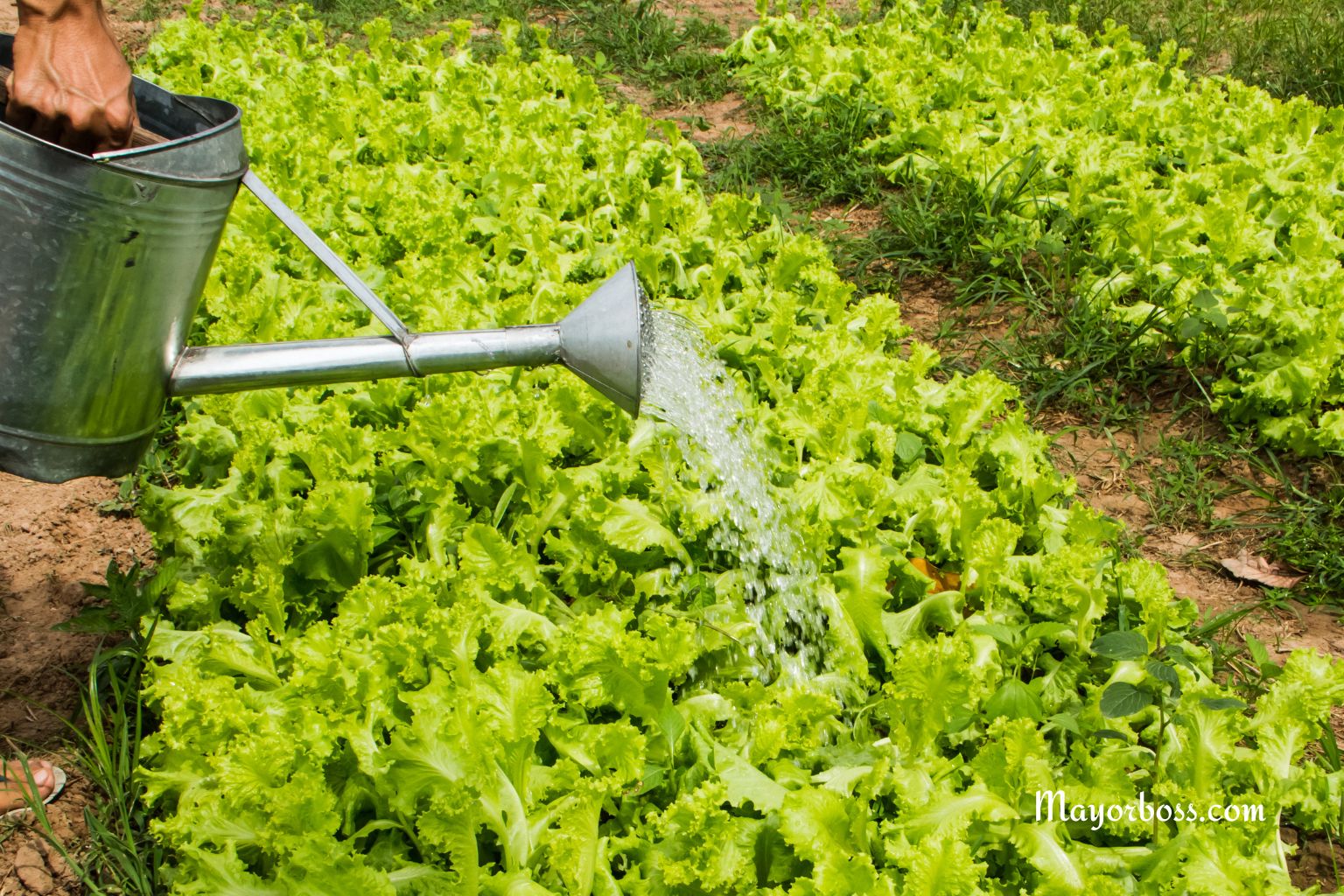How to Water Lettuce Plants Correctly
To water lettuce plants correctly, keep the soil consistently moist but not soggy, water in the morning, use a gentle spray, and avoid wetting the leaves to reduce disease risk.

Lettuce is mostly water. The crisp texture you expect depends on how much water the plant receives. If you give lettuce too little water, the leaves turn bitter and wilt. Too much water can lead to root rot or disease. For healthy, tender lettuce, watering must be just right.
How Much Water Does Lettuce Need?
Lettuce has shallow roots. This means it cannot reach deep into the soil for water. Most of its roots grow in the top few inches of soil. For this reason, lettuce needs frequent, gentle watering.
Aim to give lettuce about one inch of water each week. During hot or windy days, you may need to water more often. Always adjust based on weather and soil conditions.
When Is the Best Time to Water Lettuce?
Water lettuce plants early in the morning. This gives the leaves time to dry before evening, lowering the risk of fungal diseases. Morning watering also helps the plants handle the heat of the day.
If mornings are not possible, water in the late afternoon. Avoid watering at night. Wet leaves overnight can attract disease.
How Should You Water Lettuce?
Use a watering can with a fine rose, a hose with a gentle spray, or drip irrigation. Harsh streams can damage delicate lettuce leaves and disturb the soil. The goal is to moisten the soil without splashing water onto the leaves.
Water at the base of the plant. This delivers moisture directly to the roots and keeps the leaves dry. Keeping foliage dry is important for disease prevention.
How to Check Soil Moisture
Stick your finger into the soil near your lettuce plants. If the top inch feels dry, it is time to water. If it feels damp, wait and check again later. Lettuce does not like to sit in waterlogged soil.
Mulching around lettuce plants can help. A thin layer of straw or compost will keep moisture in the soil and reduce how often you need to water.
Adjusting Watering for Different Growth Stages
Lettuce seeds need even moisture to sprout. During germination, mist the soil surface lightly every day. After seedlings appear, keep the soil moist but not soaked.
As lettuce grows, deep and regular watering supports root development. When harvest time approaches, steady moisture helps produce crisp, full heads or leaves.
Signs of Underwatering
- Leaves wilt during the day and may not recover overnight
- Leaves look dull or feel papery
- Growth slows or stops
- Edges of leaves may turn brown or yellow
If you see these signs, increase your watering schedule. Remember, consistent moisture is better than a sudden flood.
Signs of Overwatering
- Soil stays wet or muddy
- Lower leaves turn yellow
- Roots may look black or slimy
- Plants may develop mold or mildew
If you suspect overwatering, cut back. Allow the soil surface to dry before watering again. Make sure your garden bed or containers drain well.
Watering Lettuce in Containers
Lettuce grown in pots or containers may need more frequent watering. Containers dry out faster than garden soil, especially in sun and wind. Check soil moisture daily, and water when the top inch feels dry.
Make sure your container has drainage holes. Remove excess water from saucers or trays to prevent root rot.
Using Mulch to Maintain Moisture
Applying mulch helps conserve soil moisture, keeps the soil cool, and reduces weeds. Use a thin layer of straw, shredded leaves, or compost around your lettuce plants. Avoid piling mulch against the plant stems.
Tips for Lettuce in Hot Weather
Lettuce is sensitive to heat. In hot weather, water more often to keep the soil cool and moist. Providing shade with row covers or planting lettuce where it gets afternoon shade can help prevent wilting.
Quick Recap
- Water lettuce deeply but gently, keeping the soil moist, not soggy
- Water early in the morning for best results
- Avoid wetting the leaves to reduce disease risk
- Check soil moisture with your finger
- Adjust watering based on weather and growth stage
- Use mulch to hold moisture and keep the soil cool
Frequently Asked Questions
1. How often should I water lettuce plants?
Check the soil daily. Water when the top inch feels dry. During hot weather, you may need to water every day.
2. Can I water lettuce from above?
It is better to water at the soil level to avoid wetting the leaves, which can lead to disease.
3. What is the best type of water for lettuce?
Room temperature tap water is fine. Avoid using ice-cold water, which can shock the plants.
4. Why are my lettuce leaves turning yellow?
Yellow leaves may mean overwatering, poor drainage, or lack of nutrients.
5. Should I use mulch for lettuce?
Yes, a thin layer of mulch helps keep the soil moist and cool, and it suppresses weeds.






